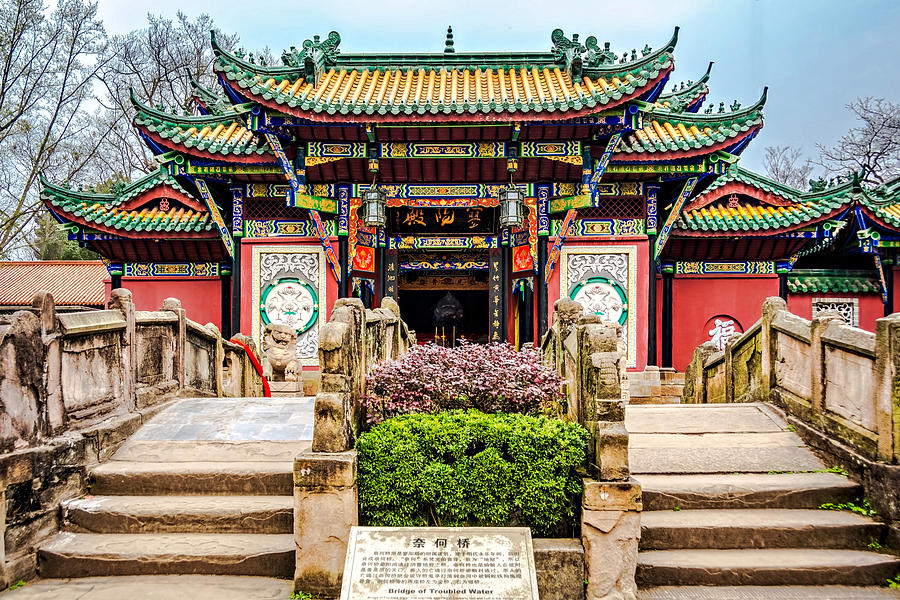China: one of the vastest countries in the world, covering an enormous nine and a half million kilometres squared of land. The country is abundant with a rich culture and heritage; dotted with both over-populated cities and near-isolated countryside; bursting with unique flora and fauna found no where else on the planet (in the wild at least); and is, of course, home to some of the most iconic architecture.
Well-famed for the likes of the Great Wall of China, Beijing’s Forbidden City and Imperial Palace, the terracotta army in Xi’an, Shanghai’s metropolis, and giant panda conservation centres, there is much, much more to the country than first meets the eye. China holds many more hidden gems in far-flung parts of its land that are often overlooked or completely unknown by the tourist market.
From archaeological relics and treasures to picturesque landscapes showcasing Mother Nature’s wonders, there are so many other places in the ‘Middle Kingdom’ for you to explore.
Fengdu Ghost City
If you venture high up the Ming Mountain in Fengdu, Chongqing, by the northern point of the Yangtze River, you’ll uncover the ‘City of Ghosts’. It’s no secret that an important part of Chinese culture is ancestry and the afterlife. The city fascinatingly captures this mysterious culture, inviting visitors to learn more about the country’s past and its traditions.

Wandering through the city evokes a transcendental experience; the city is believed to date back more than 2,000 years, heralding the time of the Han Dynasty (206 BCE-220 CE), and legends tell of two founders escaping to the land, eventually becoming immortal. The founders’ names, Yin and Wang, were merged to mean ‘King of the Underworld’.

You need only glance at the hill from afar to see the giant face of ‘The Ghost King’ submerged there – the sculpture actually holds the Guinness World Record for being the biggest sculpture carved on a rock, measuring some 138 metres tall and 217 metres wide.
There are a number of other eerie landmarks, including the ‘Last Glance at Home Tower’, the ‘Nothing-to-be-Done Bridge’, and the ‘Ghost Torturing Past’, all named to evoke images of the afterlife. Housed within the city is also a theme park and haunted house filled with ominous representations of the afterlife, in the form of masks, statuettes, and painted symbols.
Dongchuan Red Land
A photographer’s dream, the Red Land in Dongchuan near Kunming is an incredible example of one of Earth’s scientific miracles. Often praised as ‘God’s palette’, the area spans nearly 30 miles of vibrant colour.

Well-known for its subtropical climate, scientists have found that the temperature here causes iron to oxidise and leave deposits in the soil, which is what gives the land its rich reds and burnt oranges.
Abundant with crops and plants surrounding the land during May to June and September to November, the fields are a dazzling mix of green barley, golden buckwheat, white oil flowers, and brilliant red-orange soil, against a calming blue sky and misty mountains.
Hanging Temple of Hengshan
There are many temples and shrines across China to mark holy tribute to the country’s three main religions and philosophies: Buddhism, Taoism and Confucianism. One of the lesser-known, yet arguably most astounding temples, is the Hanging Temple of Hengshan, in Datong City, Shanxi province.
Sometimes thought of as a forgotten wonder of the world, the Hanging Temple is certainly a gravity-defying mystery and a marvellous sight to behold. Believed to date all the way back to the 5th-century as the craftsmanship of the monk Liao Ran, the temple is carved into the rock-face of the mountain, amazingly still in tact these hundreds of years later, offering an extraordinary glimpse into China’s religious past.

It is the only existing temple to combine all three of China’s main religions, making it not only an iconic mastery but an incredible holy relic too. The temple has been restored and expanded since its initial creation and now spans 40 rooms with dizzyingly winding passageways, all filled with numerous statues and carvings to represent the three religions.
Hongcun Ancient Village
One part of China that lets you truly embrace the country’s culture and heritage is the ancient village of Hongcun, in the Huizhou region of southern Anhui Province. The traditional village has a history dating back more than 1,000 years and offers an iconic picturesque image due to the hundreds of charming houses perched along the riverside, the numerous narrow lanes, and the graceful arched bridges.

The crescent-shaped Moon Pond lies at the village’s centre, acting as an idyllic abyss, whilst the historical architecture of the houses and buildings showcases the village’s history with the structures and stylistic designs being partly preserved from the Ming and Qing Dynasties.
Listed in 2000 as a UNESCO World Cultural Heritage Site, Hongcun Village is more familiar than you might have thought; scenes from the film Crouching Tiger, Hidden Dragon were shot here, offering the film an authentic Chinese backdrop. As well as exploring the village itself, there is a small museum called Chenzhi Hall.
Tianmen Shan

When staring up to the top of Tianmen Shan (south of Zhangjiajie city), it’s easy to understand China’s religious ideologies about the afterlife. The site provides an otherworldly view – 999 stairs lead up 4,100 feet to a giant hole in the mountain known as the ‘Gateway to Heaven’.
This slit in the cave stretches 420 feet high and 180 feet wide, and is said to be another of nature’s miracles (researchers believe water eroded a hole between two peaks), yet one with a particular symbolism. Sunlight bursts through the hole, giving the aura of an entirely other realm hidden just beyond.

If you can endure the arduous climb, there are stunning views across the mountain range. So much so that the place really evokes something special – it’s not difficult to see why generations of Hunan people believed that the area was the realm of the gods and the hole a portal to Heaven.
With its truly unique culture and heritage, and the plethora of astonishing landmarks and attractions, China offers plenty of places to explore beyond simply the most well-known.


